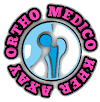Popular Posts

Gray anatomy pdf
October 31, 2019

NEUROLOGY AND NEUROSURGERY ILLUSTRATED PDF BY KHER AKSHAY COLLECTION
December 12, 2019

Medical Microbiology PDF file free download
July 07, 2018
Random Posts
3/random/post-list
Popular Posts

GOLWALLA MEDICINE TEXTBOOK PDF FREE DOWNLOAD
April 04, 2019

Ebnezar Orthopaedic textbook pdf
April 15, 2019

CLINICAL NEUROANATOMY 2ND EDITION PDF
February 21, 2019
Crafted with by TemplatesYard



0 Comments